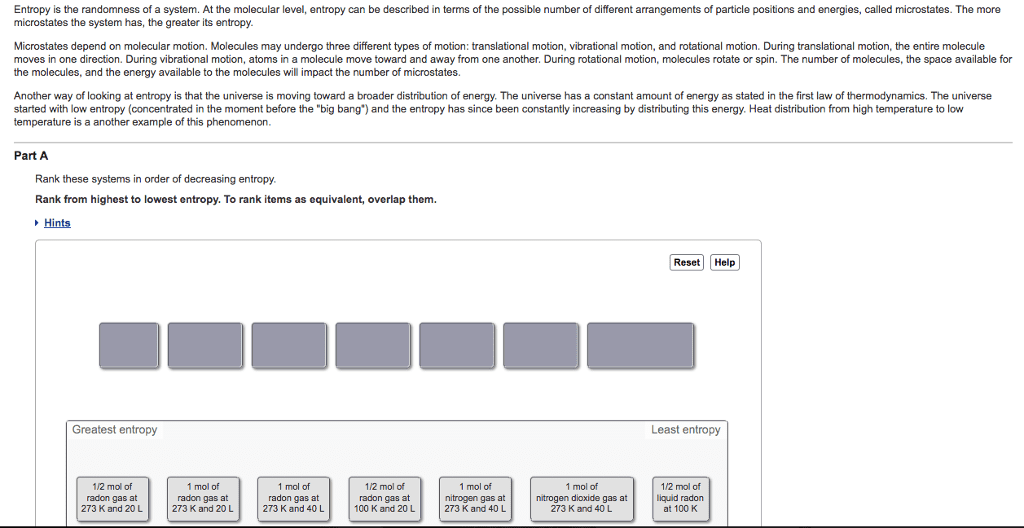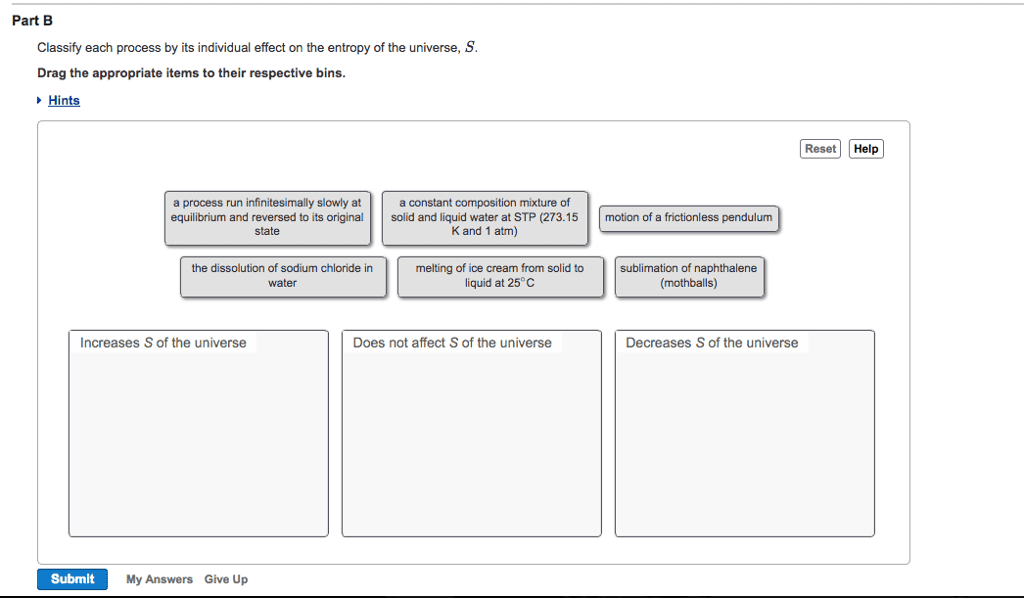CHM135H1 Chapter Notes - Chapter 9, 17: Internal Energy, Chemical Equation, Thermodynamics

Chapter 9
9.1: Energy and Its Conservation
• Energy: the capacity to do work or supply heat
o Classified as either kinetic or potential
• Kinetic Energy (): the energy of motion
o SI Unit: Joule (J)
=
• Potential Energy (): stored energy
o Stored in an object because of its height or in a molecule because of its reactions
it can undergo
• Conservation of Energy Law: energy cannot be created nor destroyed; it can only be
converted from one form into another
o Also known as the First Law of Thermodynamics
• Thermal Energy: the kinetic energy of molecular motion
o Found by measuring temperature of an object
▪ Low temperature: atoms moving slowly
▪ High temperature: atoms moving rapidly
• Heat: the energy transferred from one object to another as the result of a temperature
difference between them
• Chemical Energy: potential energy in which chemical bonds act as the storage medium
9.2: Internal Energy and State Functions
• System: substances in an experiment, the starting reactants and the final products
• Surroundings: everything found around the system
• Internal Energy (E): the sum of all the kinetic and potential energies for every
molecule/ion in the system
• First Law of Thermodynamics (restated): the total internal energy E of an isolated
system constant
• Not possible that truly isolate a chemical reaction from its surroundings
o Chemicals are in physical contact with flask/container
o Important to measure any energy that enters the system from the surroundings
or leaves the system and flows to the surroundings
▪ Change in the internal energy of the system, ∆E
∆ = � − ���
• Difference in internal energy between the final state of the system after reaction and
the initial state of the system before the reaction
• Energy changes are measures from the point of view of the system
o Energy that flows from a system to the surroundings has a negative sign
▪ The system has lost it
▪ � < ���
find more resources at oneclass.com
find more resources at oneclass.com

o Energy that flows to a system from the surroundings has a positive sign
▪ The system has gained it
▪ � > ���
• Internal energy of a system depends on many things:
o Chemical identity
o Sample size
o Temperature
o Pressure
o Physical State (gas, liquid, or solid)
• State Function: a function/property whose value depends only on the present condition
of the system, not on the path used to arrive at that condition
o Internal energy is said to be a state function
o The overall change in any state function is zero when the system returns to its
original condition
9.3: Expansion Work
▪ Work: the force that produces the movement of an object times the distance moved
o Work = Force * Displacement
o Most common type of work in chemical systems is the expansion work
▪ Done as a result of a volume change in the system
▪ If a reaction takes place inside a container outfitted with a moveable piston, the greater
volume of gas in the product will force the piston outward against the pressure of
atmosphere
o Air particles move aside and therefore, do work
= − ∗
= ∗ = − ∗ ∗
∆ = ∗
= −∆
• The amount of work done is equal to the pressure the gas exerts against the piston
times the volume change
o Work energy is leaving the system (negative sign)
o System has lost energy
• When a reaction takes place with a contraction in volume rather than expansion, the ∆
term has a negative sign
o Work has a positive sign
o System has gained energy
• When there is no volume change, ∆ = and there is no work
9.4: Energy and Enthalpy
• Change in the internal energy of a system (∆):
∆ = + = − ∆
• q has a positive sign if the system gains heat
• q has a negative sign if the system loses heat
find more resources at oneclass.com
find more resources at oneclass.com

= ∆ + ∆
• Energy change in a system is due entirely to heat transfer when ∆ =
o = ∆ @ ∆ =
• Energy change in the system is due to both heat transfer and PV work if ∆ =
o = ∆ + ∆
• Heat of Reaction: the enthalpy change for a reaction
o Also known as Enthalpy Change (∆)
∆ = ∆ + ∆
• Enthalpy is a state function whose value depends on the current state of the system
o We do ot eed to ko the systes ethalpy efoe ad afte a eatio
o Only need to know the difference between final and initial states
• Only the enthalpy change during a reaction is important
9.5: Thermochemical Equation and the Thermodynamic Standard State
• Thermochemical Equation: gives a balanced chemical equation along with the value of
the enthalpy change, the amount of heat released or absorbed when reactants are
converted to products
o Specifies the amount of each substance
• Thermodynamic Standard State: conditions under which thermodynamic measurements
are reported; 298.15 K, 1 atm, 1 M
o Measurements made under these standard conditions are indicated by addition
of the superscript °
• Standard Enthalpy of Reaction: enthalpy change under standard-state conditions
o Indicated by the symbol ∆°
o Refer to the reaction going in the direction written
o For a reverse reaction, the sign of ∆° must be changed
▪ Equal in magnitude but opposite in sign for the corresponding forward
reaction
o Physical states of reactants and products must be specified as solid (s), liquid (l),
gaseous (g), or aqueous (aq)
9.6: Enthalpies of Chemical and Physical Changes
Enthalpies of Chemical Change
• Endothermic: a reaction in which heat is absorbed and the temperature of the
surroundings fall
o ∆ has a positive sign
o Heat flowed into the system from the surroundings
• Exothermic: a reaction in which heat is evolved and the temperature of the
surroundings rises
o ∆ has a negative sign
o Heat has flowed out of the system to the surroundings
• The value of ∆° given for an equation assumes:
o Equation is balanced to represent the # of moles of reactants and products
find more resources at oneclass.com
find more resources at oneclass.com

90
CHM135H1 Full Course Notes
Verified Note
90 documents
Document Summary
9. 2: internal energy and state functions: system: substances in an experiment, the starting reactants and the final products, surroundings: everything found around the system. Important to measure any energy that enters the system from the surroundings or leaves the system and flows to the surroundings: change in the internal energy of the system, e. Internal energy is said to be a state function: the overall change in any state function is zero when the system returns to its original condition. (cid:1831)=(cid:1869)+(cid:1875)=(cid:1869) (cid:1842) (cid:1848: q has a positive sign if the system gains heat, q has a negative sign if the system loses heat. 9. 10: bond dissociation energies: always positive, energy must always be put into bonds to break them. It is possible for a process to be: nonspontaneous process, decrease in (cid:1834) (negative) Increase in (cid:1834) (positive: decrease in (cid:1845) (negative, positive (cid:1834, positive (cid:1845, negative (cid:1834, negative (cid:1845)



